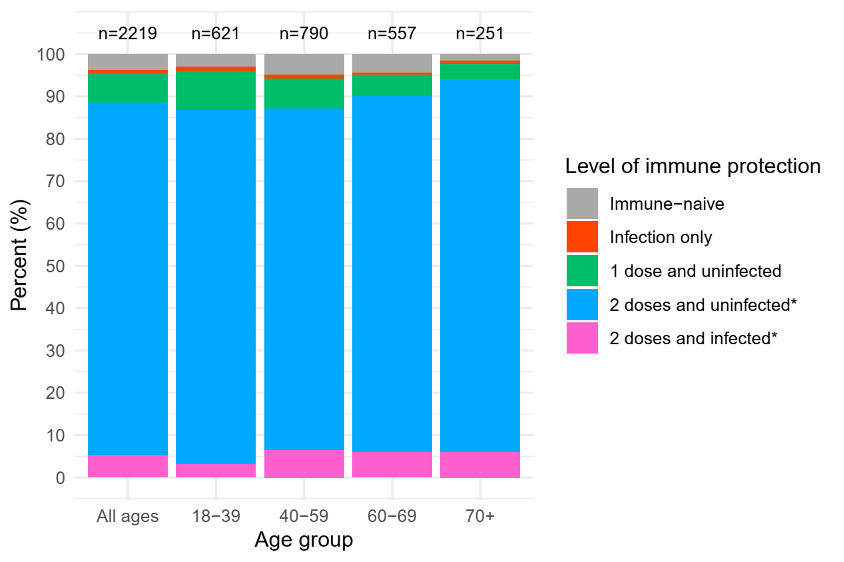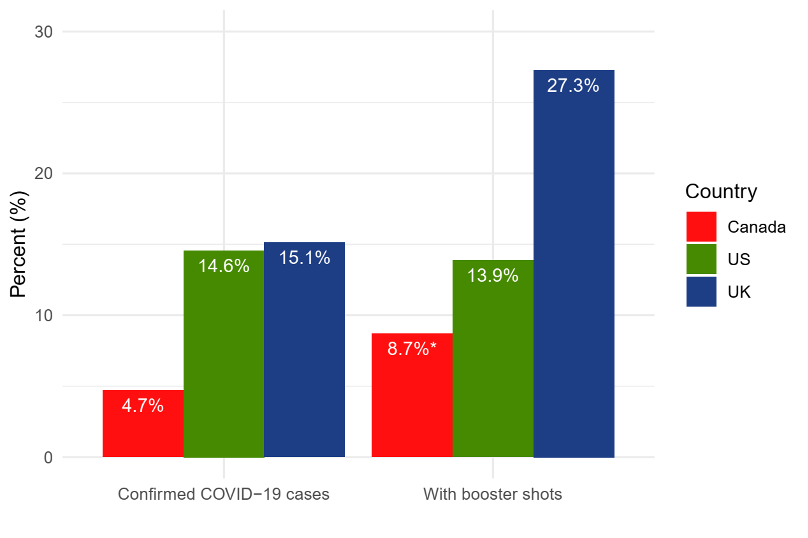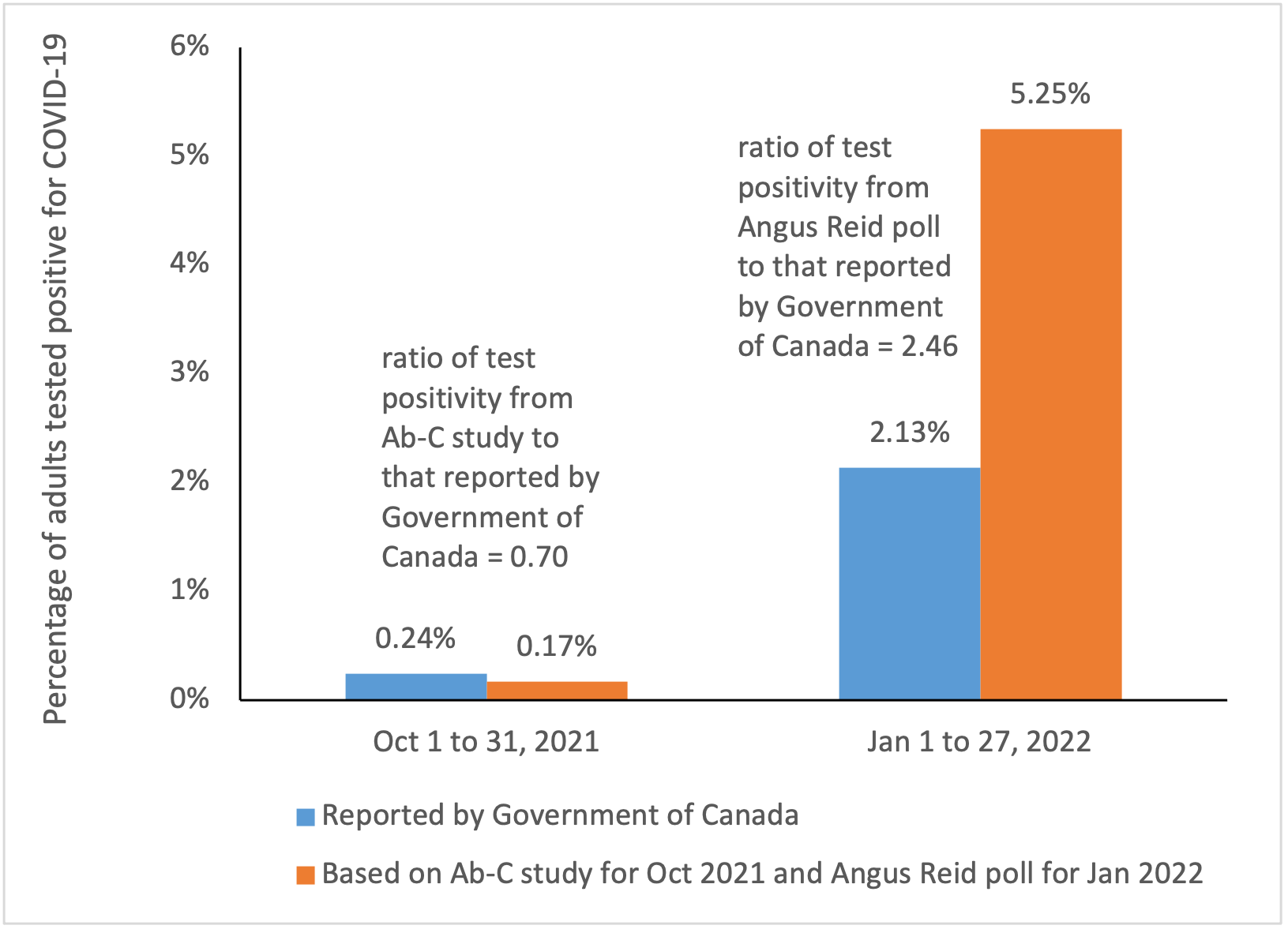With the Omicron variant spreading rapidly throughout the country over the last few months, many Canadians have wondered about the level of protection provided by vaccines as opposed to natural infection. As you probably know, the two ways to develop immunity to COVID-19 are by 1) being infected and recovering, and 2) being vaccinated, with immunity increasing with the number of vaccine doses. In this newsletter, we can report to you Ab-C Study participants’ COVID-19 infection history and vaccination status before the Omicron wave, which began in mid-December 2021, from the Phase 3 survey. The good news is that 95% of participants have been vaccinated, and most have had at least two doses. More details can be found below.
In Ab-C Phase 3, we asked participants about their COVID-19 infection history and vaccination status. As in earlier phases, we defined a person as having COVID-19 infection history if they had tested positive for COVID-19, or had a positive test from their dried blood spot (DBS) for antibodies to a specific protein – the nucleocapsid protein— that shows up against a natural infection. Infection history was considered separate from a person’s vaccination status. Based on both COVID-19 infection history and vaccination status, we grouped participants into five categories as of October 15, 2021:
- Immune-naïve (no infection history or vaccination)
- Infection only
- One vaccine dose and uninfected
- Two vaccine doses and uninfected
- Two vaccine doses and infected
In Figure 1, you can see that by far the most common source of immunity is two vaccine doses, with older Canadians more likely to be fully vaccinated than younger people. However, less than 1% of participants had had a booster shot (i.e., a third dose) by October (but this has risen substantially in the last four months). COVID-19 infections were rare, particularly among those aged 18-39. Even in the 40-59 age group, which has the highest proportion of participants with COVID-19 infection history, less than 10% had been infected. Considering both infection history and vaccination together, those aged 40-59 had the highest proportion (5%) without any immunity (i.e. “immune-naïve”).

Nationally, Canada had a relatively low level of confirmed COVID-19 cases before December 1, 2021—about 5% of the total population—compared with the U.S. and UK (about 15% of each population). Canadians also had fewer booster doses (less than 9%), compared to 14% for the U.S. and 27% for the UK (Figure 2).

Did the low rate of booster doses and natural infection leave Canadians especially vulnerable to the Omicron variant? Evidence from the UK and U.S. has found that boosters offer better protection against symptomatic and serious disease than two doses alone. Vaccination combined with a history of infection gives an even greater level of protection. When the results from Ab-C Phase 4 (currently under way) are complete, we’ll be able to report in detail on Omicron outcomes.
We have a head start on Omicron data from an early February survey of Canadian adults conducted by the Angus Reid Institute. Nine percent reported testing positive for COVID-19 in January 2022, and another five percent were likely infected based on their self-reported symptoms. In addition, one in five (21%) Canadians (one in four in Québec) said that at least one member of their household has tested positive in the last couple months. Considering the Omicron variant’s high transmission rate and the fact that about 60% of Canadians have not been tested during this wave, these reported infection rates likely underestimate the number of cases. If these numbers are confirmed in Phase 4, it may be that Omicron doubles the number of Canadians who have been infected with COVID-19.

Who tests positive for COVID depends, of course, on who gets tested, and this varies across Canada and according to population characteristics. Figure 3 shows the ratio of Canadians reporting a positive test and actual Government of Canada’s confirmed positive tests prior to Omicron and during Omicron waves. The relative difference between reported and confirmed testing was small prior to Omicron but grew substantially during the Omicron wave. This may mean that the testing data normally used by governments are not very reliable (and Ab-C Phase 4 data will help to fill this gap).
Ab-C Continues and Needs Your Support
We would like to thank you and all other Ab-C participants. Without your contributions, this study would not have been possible. For those who have already completed the Ab-C December survey and returned their dried blood spot samples for the Phase 4 study, rest assured you will receive your individual COVID antibody results soon. If you have not done so, we encourage you to act as soon as possible, so that we can provide your results without delay.
Your completed questionnaire and/or blood sample will help fill crucial gaps in knowledge about the extent of the Omicron viral wave.